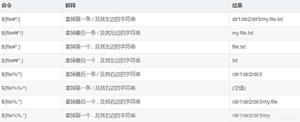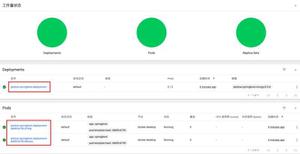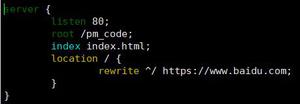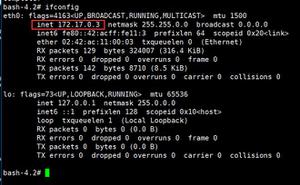Python使用Tkinter实现机器人走迷宫
这本是课程的一个作业研究搜索算法,当时研究了一下Tkinter,然后写了个很简单的机器人走迷宫的界面,并且使用了各种搜索算法来进行搜索,如下图:
使用A*寻找最优路径:
由于时间关系,不分析了,我自己贴代码吧。希望对一些也要用Tkinter的人有帮助。
from Tkinter import *
from random import *
import time
import numpy as np
import util
class Directions:
NORTH = 'North'
SOUTH = 'South'
EAST = 'East'
WEST = 'West'
# Detect elements in the map
window = Tk()
window.title('CityBusPlanner')
window.resizable(0,0)
width = 25
(x, y) = (22, 22)
totalsteps = 0
buidings = [(0, 0), (1, 0), (2, 0), (3, 0), (7, 0), (8, 0), (11, 0), (12, 0), (13, 0),
(17, 0), (18, 0), (21, 0), (21, 1), (2, 2), (5, 2), (8, 2), (9, 2), (12, 2),
(14, 2), (15, 2), (16, 2), (17, 2), (21, 2), (2, 3), (4, 3), (5, 3), (7, 3),
(8, 3), (11, 3), (17, 3), (18, 3), (19, 3), (2, 4), (4, 4), (5, 4), (8, 4),
(9, 4), (14, 4), (15, 4),(17, 4), (18, 4), (19, 4), (0, 6), (2, 6), (4, 6),
(7, 6), (8, 6), (11, 6), (12, 6), (14, 6), (15, 6),(16, 6), (18, 6), (19, 6),
(2, 7), (5, 7), (21, 7), (0, 8), (2, 8), (11, 8), (14, 8), (15, 8), (17, 8),
(18, 8), (21, 8), (4, 9), (5, 9), (7, 9), (9, 9), (11, 9), (14, 9), (21, 9),
(2, 10), (7, 10), (14, 10), (17, 10), (19, 10), (0, 11), (2, 11), (4, 11),
(5, 11), (7, 11), (8, 11), (9, 11), (11, 11), (12, 11), (14, 11), (15, 11),
(16, 11), (17, 11), (18, 11), (19, 11), (0, 13), (2, 13), (3, 13), (5, 13),
(7, 13), (8, 13), (9, 13), (14, 13), (17, 13), (18, 13), (21, 13), (2, 14),
(3, 14), (5, 14), (7, 14),(9, 14), (12, 14), (14, 14), (15, 14), (17, 14),
(18, 14), (21, 14), (2, 15), (3, 15), (5, 15), (7, 15), (9, 15), (12, 15),
(15, 15), (19, 15), (21, 15), (0, 16), (21, 16), (0, 17), (3, 17), (5, 17),
(7, 17),(9, 17), (11, 17), (14, 17), (15, 17), (17, 17), (18, 17), (21, 17),
(2, 18), (3, 18), (5, 18), (7, 18),(9, 18), (11, 18), (14, 18), (17, 18),
(18, 18), (3, 19), (5, 19), (7, 19), (9, 19), (11, 19), (12, 19), (14, 19),
(17, 19), (18, 19), (0, 21), (1, 21), (2, 21), (5, 21), (6, 21), (9, 21),
(10, 21), (11, 21), (12, 21), (15, 21), (16, 21), (18, 21), (19, 21), (21, 21)]
walls = [(10, 0), (0, 12), (21, 12), (14, 21)]
park = [(14, 0), (15, 0), (16, 0)]
robotPos = (21, 12)
view = Canvas(window, width=x * width, height=y * width)
view.grid(row=0, column=0)
searchMapButton = Button(window,text = 'search')
searchMapButton.grid(row = 0,column = 1)
robotView = Canvas(window,width=x * width, height=y * width)
robotView.grid(row = 0,column = 2)
def formatColor(r, g, b):
return '#%02x%02x%02x' % (int(r * 255), int(g * 255), int(b * 255))
def cityMap():
global width, x, y, buidings,walls,park,robot
for i in range(x):
for j in range(y):
view.create_rectangle(
i * width, j * width, (i + 1) * width, (j + 1) * width, fill='white', outline='gray', width=1)
for (i, j) in buidings:
view.create_rectangle(
i * width, j * width, (i + 1) * width, (j + 1) * width, fill='black', outline='gray', width=1)
for (i,j) in walls:
view.create_rectangle(
i * width, j * width, (i + 1) * width, (j + 1) * width, fill='blue', outline='gray', width=1)
for (i,j) in park:
view.create_rectangle(
i * width, j * width, (i + 1) * width, (j + 1) * width, fill='red', outline='gray', width=1)
def robotCityMap():
global width, x, y, buidings,walls,park,robot,robotPos
for i in range(x):
for j in range(y):
robotView.create_rectangle(
i * width, j * width, (i + 1) * width, (j + 1) * width, fill='black', width=1)
robotView.create_rectangle(
robotPos[0] * width, robotPos[1] * width, (robotPos[0] + 1) * width, (robotPos[1] + 1) * width, fill='white', outline='gray', width=1)
# Create City Map
cityMap()
# Create Robot View
robotCityMap()
# Create a robot
robot = view.create_rectangle(robotPos[0] * width + width * 2 / 10, robotPos[1] * width + width * 2 / 10,
robotPos[0] * width + width * 8 / 10, robotPos[1] * width + width * 8 / 10, fill="orange", width=1, tag="robot")
robotSelf = robotView.create_rectangle(robotPos[0] * width + width * 2 / 10, robotPos[1] * width + width * 2 / 10,
robotPos[0] * width + width * 8 / 10, robotPos[1] * width + width * 8 / 10, fill="orange", width=1, tag="robot")
visited = [robotPos]
def move(dx,dy):
global robot,x,y,robotPos,robotSelf,view
global totalsteps
totalsteps = totalsteps + 1
newX = robotPos[0] + dx
newY = robotPos[1] + dy
if (not isEdge(newX, newY)) and (not isBlock(newX, newY)):
#print "move %d" % totalsteps
view.coords(robot, (newX) * width + width * 2 / 10, (newY) * width + width * 2 / 10,
(newX) * width + width * 8 / 10, (newY) * width + width * 8 / 10)
robotView.coords(robotSelf, (newX) * width + width * 2 / 10, (newY) * width + width * 2 / 10,
(newX) * width + width * 8 / 10, (newY) * width + width * 8 / 10)
robotPos = (newX, newY)
if robotPos not in visited:
visited.append(robotPos)
visitedPanel = robotView.create_rectangle(
robotPos[0] * width, robotPos[1] * width, (robotPos[0] + 1) * width, (robotPos[1] + 1) * width, fill='white', outline='gray', width=1)
robotView.tag_lower(visitedPanel,robotSelf)
else:
print "move error"
def callUp(event):
move(0,-1)
def callDown(event):
move(0, 1)
def callLeft(event):
move(-1, 0)
def callRight(event):
move(1, 0)
def isBlock(newX,newY):
global buidings,x,y
for (i,j) in buidings:
if (i == newX) and (j == newY):
return True
return False
def isEdge(newX,newY):
global x,y
if newX >= x or newY >= y or newX < 0 or newY < 0 :
return True
return False
def getSuccessors(robotPos):
n = Directions.NORTH
w = Directions.WEST
s = Directions.SOUTH
e = Directions.EAST
successors = []
posX = robotPos[0]
posY = robotPos[1]
if not isBlock(posX - 1, posY) and not isEdge(posX - 1,posY):
successors.append(w)
if not isBlock(posX, posY + 1) and not isEdge(posX,posY + 1):
successors.append(s)
if not isBlock(posX + 1, posY) and not isEdge(posX + 1,posY):
successors.append(e)
if not isBlock(posX, posY -1) and not isEdge(posX,posY - 1):
successors.append(n)
return successors
def getNewPostion(position,action):
posX = position[0]
posY = position[1]
n = Directions.NORTH
w = Directions.WEST
s = Directions.SOUTH
e = Directions.EAST
if action == n:
return (posX,posY - 1)
elif action == w:
return (posX - 1,posY)
elif action == s:
return (posX,posY + 1)
elif action == e:
return (posX + 1,posY)
delay = False
def runAction(actions):
global delay
n = Directions.NORTH
w = Directions.WEST
s = Directions.SOUTH
e = Directions.EAST
for i in actions:
if delay:
time.sleep(0.05)
if i == n:
#print "North"
move(0, -1)
elif i == w:
#print "West"
move(-1, 0)
elif i == s:
#print "South"
move(0, 1)
elif i == e:
#sprint "East"
move(1, 0)
view.update()
def searchMapTest(event):
global robotPos
actions = []
position = robotPos
for i in range(100):
successors = getSuccessors(position)
successor = successors[randint(0, len(successors) - 1)]
actions.append(successor)
position = getNewPostion(position, successor)
print actions
runAction(actions)
def reverseSuccessor(successor):
n = Directions.NORTH
w = Directions.WEST
s = Directions.SOUTH
e = Directions.EAST
if successor == n:
return s
elif successor == w:
return e
elif successor == s:
return n
elif successor == e:
return w
roads = set()
detectedBuildings = {}
blockColors = {}
blockIndex = 0
def updateBuildings(detectedBuildings):
global robotView,width
for block,buildings in detectedBuildings.items():
color = blockColors[block]
for building in buildings:
robotView.create_rectangle(
building[0] * width, building[1] * width, (building[0] + 1) * width, (building[1] + 1) * width, fill=color, outline=color, width=1)
def addBuilding(position):
global blockIndex,detectedBuildings
isAdd = False
addBlock = ''
for block,buildings in detectedBuildings.items():
for building in buildings:
if building == position:
return
if util.manhattanDistance(position, building) == 1:
if not isAdd:
buildings.add(position)
isAdd = True
addBlock = block
break
else:
#merge two block
for building in detectedBuildings[block]:
detectedBuildings[addBlock].add(building)
detectedBuildings.pop(block)
if not isAdd:
newBlock = set([position])
blockIndex = blockIndex + 1
detectedBuildings['Block %d' % blockIndex] = newBlock
color = formatColor(random(), random(), random())
blockColors['Block %d' % blockIndex] = color
updateBuildings(detectedBuildings)
def addRoad(position):
global robotView,width,robotSelf
visitedPanel = robotView.create_rectangle(
position[0] * width, position[1] * width, (position[0] + 1) * width, (position[1] + 1) * width, fill='white', outline='gray', width=1)
robotView.tag_lower(visitedPanel,robotSelf)
def showPath(positionA,positionB,path):
global robotView,width,view
view.create_oval(positionA[0] * width + width * 3 / 10, positionA[1] * width + width * 3 / 10,
positionA[0] * width + width * 7 / 10, positionA[1] * width + width * 7 / 10, fill='yellow', width=1)
nextPosition = positionA
for action in path:
nextPosition = getNewPostion(nextPosition, action)
view.create_oval(nextPosition[0] * width + width * 4 / 10, nextPosition[1] * width + width * 4 / 10,
nextPosition[0] * width + width * 6 / 10, nextPosition[1] * width + width * 6 / 10, fill='yellow', width=1)
view.create_oval(positionB[0] * width + width * 3 / 10, positionB[1] * width + width * 3 / 10,
positionB[0] * width + width * 7 / 10, positionB[1] * width + width * 7 / 10, fill='yellow', width=1)
hasDetected = set()
def detectLocation(position):
if position not in hasDetected:
hasDetected.add(position)
if isBlock(position[0],position[1]):
addBuilding(position)
elif not isEdge(position[0],position[1]):
addRoad(position)
def detect(position):
posX = position[0]
posY = position[1]
detectLocation((posX,posY + 1))
detectLocation((posX,posY - 1))
detectLocation((posX + 1,posY))
detectLocation((posX - 1,posY))
def heuristic(positionA,positionB):
return util.manhattanDistance(positionA,positionB)
def AstarSearch(positionA,positionB):
"Step 1: define closed: a set"
closed = set()
"Step 2: define fringe: a PriorityQueue "
fringe = util.PriorityQueue()
"Step 3: insert initial node to fringe"
"Construct node to be a tuple (location,actions)"
initialNode = (positionA,[])
initCost = 0 + heuristic(initialNode[0],positionB)
fringe.push(initialNode,initCost)
"Step 4: Loop to do search"
while not fringe.isEmpty():
node = fringe.pop()
if node[0] == positionB:
return node[1]
if node[0] not in closed:
closed.add(node[0])
for successor in getSuccessors(node[0]):
actions = list(node[1])
actions.append(successor)
newPosition = getNewPostion(node[0], successor)
childNode = (newPosition,actions)
cost = len(actions) + heuristic(childNode[0],positionB)
fringe.push(childNode,cost)
return []
def AstarSearchBetweenbuildings(building1,building2):
"Step 1: define closed: a set"
closed = set()
"Step 2: define fringe: a PriorityQueue "
fringe = util.PriorityQueue()
"Step 3: insert initial node to fringe"
"Construct node to be a tuple (location,actions)"
initialNode = (building1,[])
initCost = 0 + heuristic(initialNode[0],building2)
fringe.push(initialNode,initCost)
"Step 4: Loop to do search"
while not fringe.isEmpty():
node = fringe.pop()
if util.manhattanDistance(node[0],building2) == 1:
return node[1]
if node[0] not in closed:
closed.add(node[0])
for successor in getSuccessors(node[0]):
actions = list(node[1])
actions.append(successor)
newPosition = getNewPostion(node[0], successor)
childNode = (newPosition,actions)
cost = len(actions) + heuristic(childNode[0],building2)
fringe.push(childNode,cost)
return []
def calculatePositions(buildingA,path):
positions = set()
positions.add(buildingA)
nextPosition = buildingA
for action in path:
nextPosition = getNewPostion(nextPosition, action)
positions.add(nextPosition)
return positions
def showRoad(fullRoad):
global view,width
for road in fullRoad:
view.create_oval(road[0] * width + width * 4 / 10, road[1] * width + width * 4 / 10,
road[0] * width + width * 6 / 10, road[1] * width + width * 6 / 10, fill='yellow', width=1)
view.update()
def search(node):
successors = getSuccessors(node[0])
detect(node[0])
for successor in successors:
nextPosition = getNewPostion(node[0], successor)
if nextPosition not in roads:
runAction([successor]) # to the next node
roads.add(nextPosition)
search((nextPosition,[successor],[reverseSuccessor(successor)]))
runAction(node[2]) #back to top node
def searchConsiderTopVisit(node,topWillVisit):
successors = getSuccessors(node[0])
detect(node[0])
newTopWillVisit = set(topWillVisit)
for successor in successors:
nextPosition = getNewPostion(node[0], successor)
newTopWillVisit.add(nextPosition)
for successor in successors:
nextPosition = getNewPostion(node[0], successor)
if nextPosition not in roads and nextPosition not in topWillVisit:
runAction([successor]) # to the next node
roads.add(nextPosition)
newTopWillVisit.remove(nextPosition)
searchConsiderTopVisit((nextPosition,[successor],[reverseSuccessor(successor)]),newTopWillVisit)
runAction(node[2]) #back to top node
def searchShortestPathBetweenBlocks(block1,block2):
shortestPath = []
buildingA = (0,0)
buildingB = (0,0)
for building1 in block1:
for building2 in block2:
path = AstarSearchBetweenbuildings(building1, building2)
if len(shortestPath) == 0:
shortestPath = path
buildingA = building1
buildingB = building2
elif len(path) < len(shortestPath):
shortestPath = path
buildingA = building1
buildingB = building2
return (buildingA,buildingB,shortestPath)
def addBuildingToBlocks(linkedBlock,buildingA):
global detectedBuildings
newLinkedBlock = linkedBlock.copy()
for block,buildings in detectedBuildings.items():
for building in buildings:
if util.manhattanDistance(buildingA, building) == 1:
newLinkedBlock[block] = buildings
break
return newLinkedBlock
def bfsSearchNextBlock(initBuilding,linkedBlock):
global detectedBuildings
closed = set()
fringe = util.Queue()
initNode = (initBuilding,[])
fringe.push(initNode)
while not fringe.isEmpty():
node = fringe.pop()
newLinkedBlock = addBuildingToBlocks(linkedBlock,node[0])
if len(newLinkedBlock) == len(detectedBuildings):
return node[1]
if len(newLinkedBlock) > len(linkedBlock): # find a new block
actions = list(node[1])
'''
if len(node[1]) > 0:
lastAction = node[1][len(node[1]) - 1]
for successor in getSuccessors(node[0]):
if successor == lastAction:
nextPosition = getNewPostion(node[0], successor)
actions.append(successor)
return actions + bfsSearchNextBlock(nextPosition, newLinkedBlock)
'''
return node[1] + bfsSearchNextBlock(node[0], newLinkedBlock)
if node[0] not in closed:
closed.add(node[0])
for successor in getSuccessors(node[0]):
actions = list(node[1])
actions.append(successor)
nextPosition = getNewPostion(node[0], successor)
childNode = (nextPosition,actions)
fringe.push(childNode)
return []
def isGoal(node):
global detectedBuildings,robotPos
linkedBlock = {}
positions = calculatePositions(robotPos, node[1])
for position in positions:
for block,buildings in detectedBuildings.items():
for building in buildings:
if util.manhattanDistance(position, building) == 1:
linkedBlock[block] = buildings
print len(linkedBlock)
if len(linkedBlock) == 17:
return True
else:
return False
def roadHeuristic(road):
return 0
def AstarSearchRoad():
global robotPos,detectedBuildings
"Step 1: define closed: a set"
closed = set()
"Step 2: define fringe: a PriorityQueue "
fringe = util.PriorityQueue()
"Step 3: insert initial node to fringe"
"Construct node to be a tuple (location,actions)"
initRoad = (robotPos,[])
initCost = 0 + roadHeuristic(initRoad)
fringe.push(initRoad,initCost)
"Step 4: Loop to do search"
while not fringe.isEmpty():
node = fringe.pop()
if isGoal(node):
print len(closed)
return node[1]
if node[0] not in closed:
closed.add(node[0])
for successor in getSuccessors(node[0]):
actions = list(node[1])
actions.append(successor)
newPosition = getNewPostion(node[0], successor)
childNode = (newPosition,actions)
cost = len(actions) + roadHeuristic(childNode)
fringe.push(childNode,cost)
return []
def searchRoad(building):
global detectedBuildings,robotPos
linkedBlock = {}
initBuilding = building
return bfsSearchNextBlock(initBuilding,linkedBlock)
def searchShortestRoad():
shortestRoad = []
shortestPositions = set()
for block,buildings in detectedBuildings.items():
for building in buildings:
road = searchRoad(building)
positions = calculatePositions(building, road)
if len(shortestPositions) == 0 or len(positions) < len(shortestPositions):
shortestRoad = road
shortestPositions = positions
print len(shortestPositions)
showRoad(shortestPositions)
def searchMap(event):
print "Search Map"
global robotPos,roads,detectedBuildings,delay
actions = []
#roads = set()s
#roads.add(robotPos)
#fringe = util.Stack()
initNode = (robotPos,[],[]) # (position,forwardActions,backwarsdActions)
#fringe.push(initNode)
roads.add(robotPos)
search(initNode)
#searchConsiderTopVisit(initNode, set())
print detectedBuildings
print len(detectedBuildings)
#path = AstarSearchBetweenbuildings((6,21), (2, 18))
#showPath((6,21),(2,18), path)
'''
shortestRoad = set()
for block1 in detectedBuildings.values():
roads = set()
for block2 in detectedBuildings.values():
if not block1 == block2:
(buildingA,buildingB,path) = searchShortestPathBetweenBlocks(block1, block2)
#showPath(buildingA,buildingB,path)
positions = calculatePositions(buildingA,buildingB,path)
roads = roads | positions
if len(shortestRoad) == 0 or len(roads) < len(shortestRoad):
shortestRoad = roads
print len(shortestRoad)
showRoad(shortestRoad)
'''
'''
block1 = detectedBuildings.values()[3]
print block1
block2 = detectedBuildings.values()[5]
print block2
(buildingA,buildingB,path) = searchShortestPathBetweenBlocks(block1, block2)
print buildingA,buildingB,path
showPath(buildingA,buildingB,path)
block1 = detectedBuildings.values()[10]
print block1
block2 = detectedBuildings.values()[20]
print block2
(buildingA,buildingB,path) = searchShortestPathBetweenBlocks(block1, block2)
print buildingA,buildingB,path
showPath(buildingA,buildingB,path)
'''
searchShortestRoad()
'''
path = searchRoad()
#path = AstarSearchRoad()
positions = calculatePositions(robotPos, path)
print len(positions)
showRoad(positions)
delay = True
#runAction(path)
'''
window.bind("<Up>", callUp)
window.bind("<Down>", callDown)
window.bind("<Right>", callRight)
window.bind("<Left>", callLeft)
window.bind("s", searchMap)
searchMapButton.bind("<Button-1>",searchMap)
window.mainloop()
下面的util.py使用的是加州伯克利的代码:
# util.py
# -------
# Licensing Information: You are free to use or extend these projects for
# educational purposes provided that (1) you do not distribute or publish
# solutions, (2) you retain this notice, and (3) you provide clear
# attribution to UC Berkeley, including a link to http://ai.berkeley.edu.
#
# Attribution Information: The Pacman AI projects were developed at UC Berkeley.
# The core projects and autograders were primarily created by John DeNero
# (denero@cs.berkeley.edu) and Dan Klein (klein@cs.berkeley.edu).
# Student side autograding was added by Brad Miller, Nick Hay, and
# Pieter Abbeel (pabbeel@cs.berkeley.edu).
import sys
import inspect
import heapq, random
"""
Data structures useful for implementing SearchAgents
"""
class Stack:
"A container with a last-in-first-out (LIFO) queuing policy."
def __init__(self):
self.list = []
def push(self,item):
"Push 'item' onto the stack"
self.list.append(item)
def pop(self):
"Pop the most recently pushed item from the stack"
return self.list.pop()
def isEmpty(self):
"Returns true if the stack is empty"
return len(self.list) == 0
class Queue:
"A container with a first-in-first-out (FIFO) queuing policy."
def __init__(self):
self.list = []
def push(self,item):
"Enqueue the 'item' into the queue"
self.list.insert(0,item)
def pop(self):
"""
Dequeue the earliest enqueued item still in the queue. This
operation removes the item from the queue.
"""
return self.list.pop()
def isEmpty(self):
"Returns true if the queue is empty"
return len(self.list) == 0
class PriorityQueue:
"""
Implements a priority queue data structure. Each inserted item
has a priority associated with it and the client is usually interested
in quick retrieval of the lowest-priority item in the queue. This
data structure allows O(1) access to the lowest-priority item.
Note that this PriorityQueue does not allow you to change the priority
of an item. However, you may insert the same item multiple times with
different priorities.
"""
def __init__(self):
self.heap = []
self.count = 0
def push(self, item, priority):
# FIXME: restored old behaviour to check against old results better
# FIXED: restored to stable behaviour
entry = (priority, self.count, item)
# entry = (priority, item)
heapq.heappush(self.heap, entry)
self.count += 1
def pop(self):
(_, _, item) = heapq.heappop(self.heap)
# (_, item) = heapq.heappop(self.heap)
return item
def isEmpty(self):
return len(self.heap) == 0
class PriorityQueueWithFunction(PriorityQueue):
"""
Implements a priority queue with the same push/pop signature of the
Queue and the Stack classes. This is designed for drop-in replacement for
those two classes. The caller has to provide a priority function, which
extracts each item's priority.
"""
def __init__(self, priorityFunction):
"priorityFunction (item) -> priority"
self.priorityFunction = priorityFunction # store the priority function
PriorityQueue.__init__(self) # super-class initializer
def push(self, item):
"Adds an item to the queue with priority from the priority function"
PriorityQueue.push(self, item, self.priorityFunction(item))
def manhattanDistance( xy1, xy2 ):
"Returns the Manhattan distance between points xy1 and xy2"
return abs( xy1[0] - xy2[0] ) + abs( xy1[1] - xy2[1] )
以上是 Python使用Tkinter实现机器人走迷宫 的全部内容, 来源链接: utcz.com/z/353131.html









